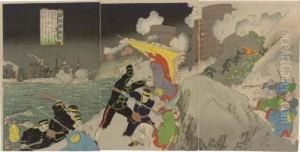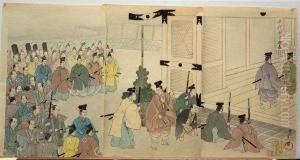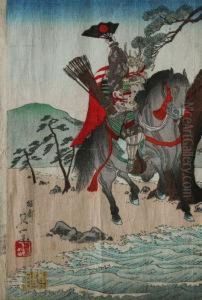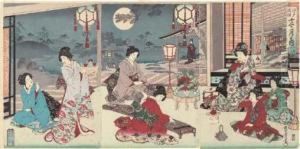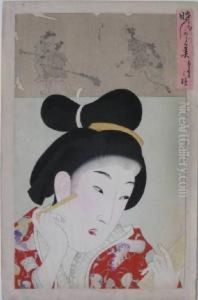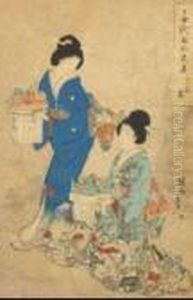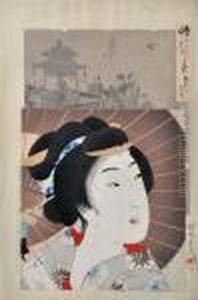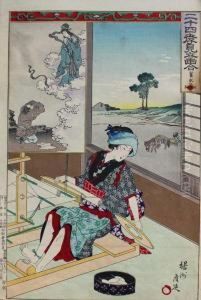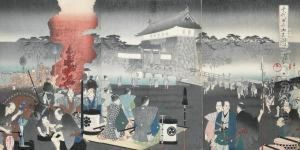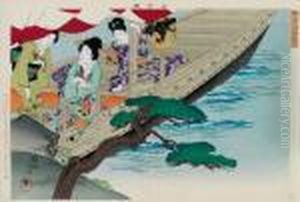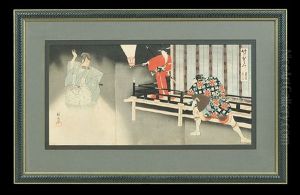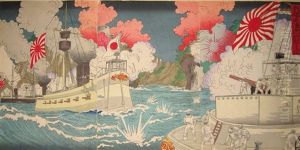Chikanobu Toyohara Paintings
Chikanobu Toyohara, born Hashimoto Naoyoshi in 1838, was a prolific and skilled Japanese woodblock print artist, known for his works during the Meiji period. His life spanned the transition of Japan from the feudal Edo period to the modern Meiji era, a time of rapid modernization and westernization. Chikanobu is best recognized for his vivid depictions of women, historical events, and scenes of the Meiji restoration, capturing both the traditional and the modern aspects of Japanese society.
Chikanobu started his career in the arts as a samurai in the service of the Tokugawa Shogunate, taking part in the Boshin War, a conflict that led to the overthrow of the Shogunate and the restoration of imperial power. After the war, he turned to the arts, studying under various masters, including members of the Utagawa school, which greatly influenced his style.
Throughout his career, Chikanobu demonstrated a profound ability to blend the old with the new. He produced a wide range of subjects including, but not limited to, bijinga (pictures of beautiful women), historical prints, and scenes of daily life. His series 'Chiyoda no O-oku' (The Ladies of the Chiyoda Palace) and 'Shin Bijin' (True Beauties) are among his most celebrated works, showcasing his meticulous attention to detail and his ability to capture the elegance and grace of Japanese women.
Despite his success, Chikanobu faced financial difficulties throughout his life, partly due to the changing tastes in art and the decline in popularity of traditional woodblock prints in the face of modern printing technologies. Nevertheless, his works have garnered significant attention and appreciation in the years following his death, with collectors and scholars recognizing the importance of his contributions to the art of the Meiji period.
Chikanobu Toyohara's legacy is that of a bridge between eras, capturing the essence of Japan's transition from feudal isolation to a modern society. His prints remain a valuable resource for understanding the cultural and societal shifts of his time, reflecting both the continuity and change in Japanese art and society. He passed away in 1912, leaving behind a vast and diverse body of work that continues to be studied and admired for its artistic and historical significance.
